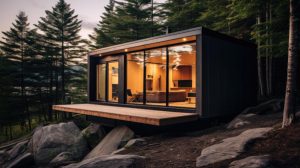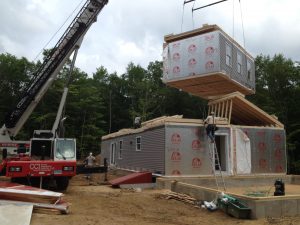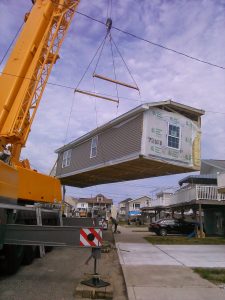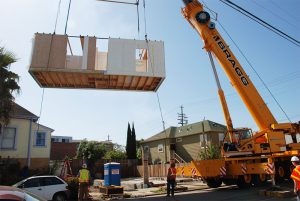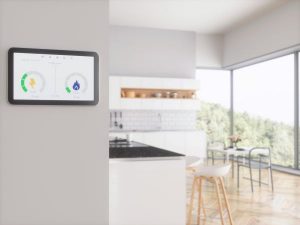
If you are considering building a new modular home, the first step in the process is to do your research. If you are reading this, congratulations, you are exactly where you need to be. Building a new home can be a stressful undertaking, so we’ll try to ease that stress a bit here.
As with any major undertaking, it’s probably best to start with your budget. In this case, how much home can you afford. If you haven’t done so yet, please read our article on What Will My Modular Home Cost.
How much home you can afford obviously depends on your income and other sources of revenue you have to make the monthly mortgage payments. Modular homes are built to the same codes as conventionally constructed homes. As such, financing options for modular homes are similar. Three more factors in affordability are location, location, location. While $250,000 might get you a nice four-bedroom home in some parts of the country, it gets you a cardboard box in San Francisco.
In general, here are items that most lenders will consider when working with you on a mortgage:
Debt-to Income
This is simply the ratio of your minimum monthly debt payments divided by your monthly income. For example, if you have two or three credit cards with balances, a car payment, and a person loan and all those monthly payments total $1,000 a month, the lender will look at your monthly income to determine your ability to repay the mortgage. If your monthly income is $5,000, your debt to income ratio is $1,000/$5,000 or 20%. In other words, it takes 20% of your current income to pay your current debt obligations, and in this example, excluding your mortgage. If your mortgage payment is expected to be $2,000 a month, that would push your debt to income ratio to $3,000/$5,000 or 60%. That is likely a level that few lenders will be comfortable with. Ideally you want to be no higher than 40% including your mortgage, otherwise it may be difficult to get favorable mortgage terms.
How do I know what the monthly payment will be? This will depend on several factor including the total amount financed, the term of the loan, and the interest rate you pay to borrow the money. Interest rates change and can vary between lenders. The chart below will give you an estimate of the monthly payments based on the interest rates indicted. We are also only showing fixed interest rates. Most lenders offer variable rates as well.
So from our previous example and using the chart above, you can see that a mortgage payment of around $750 a month will make your debt to income ration around 35% ($1,750/$5,000 = .35), meaning you are not going to be able to but much “house” given your current situation. But if you pay off that car and those credit cards (always a good idea!) you can improve your home buying power and open up more options.
Down Payment
This is perhaps the biggest hurdle to overcome when considering a new home. In years past, lenders loaned money to buyers with little money down and with questionable debt to income ratios. Then the housing market crashed! Lenders are more cautious and selective today when it comes to mortgages. While there are lenders and programs available for first time home buyers and down payment assistance, generally speaking you should plan on having about 20% of your home’s value as a down payment. That lowers the amount you will need to borrow and reduces or eliminates other expenses such as private mortgage insurance or PMI. PMI is a monthly expense added to your regular mortgage payment if you put less than 20% of the homes appraised value down to protect the lender
Credit Score
Your “FICO” score is likely the first thing a lender will ask for or check. Its best to be straightforward and honest with your lender if your credit is less than desirable, as they will find out soon enough. So what is FICO and what is a good score? There are three major credit scoring entities used by a vast majority of lenders in the U.S. – Equifax, Experian, and TransUnion. Your FICO score is based on credit information that one or more of these credit agencies provide to lenders. Information is based in part on how much debt you currently have, you past payment history on that debt and the length of your credit history. Scores range between 300-850, with 850 being the absolute best.
Generally, if your score is 750 or above, you are in good shape. You have proven that you can pay your obligations in a timely manner and you are likely to repay your new obligation. Anything over 700 is considered a good score and will be acceptable to most lenders. A score of 650-699 is average. You may still qualify for a loan, but there may be some other conditions applied. Generally, a score below 650 is going to be challenging for most traditional lenders. You may be required to have a co-signer on the mortgage if your score is marginal.
Let’s Get Serious!
If you have money saved up for a down payment, have a strong credit score, and a solid debt to income ratio, as well as a stable source of income – take that information to your bank and get a pre-qualified or pre-approval letter. A pre-qualified is letter is the first step and an initial assessment form a lender that can help you determine how large of a mortgage you can afford. A pre-approval letter from a lender tells builders you mean business and are ready to go! This involves completing an application with a lender, analyzing your credit score and income, and getting a specific amount of mortgage that you have been APPROVED for. It’s becoming more common for realtors, builders, and others involved in the home building industry to require this letter before working with you.
That’s quite a bit of information to absorb in one reading so here’s a recap:
- What is your monthly household income?
- What are your monthly debt payments for credit cards, car payments, existing rent or mortgage, or personal loans?
- What is the ratio of B/A? (Ideally below 35%).
- How much have you currently save for a down payment?
- What is your Credit Score?
- Do you have a pre-qualification letter from your bank?
- Do you have a pre-approval letter from your bank?
Learn More About the Benefits of Modular Homes
Pros and Cons of Modular Homes
The pros of modular homes include lower costs over traditional construction methods, better quality, improved construction speed, and better resilience while the cons consist of a bit more complicated financing process, lack of customization, and the social stigma that is the consequence of the low-quality of modular homes in the past. In this article, we…
2023 Home of the Year Winners Announced!
Announced at the MHBA 2023 Annual Conference & Housing Summit, we are happy to present the 2023 MHBA Modular Homes of the Year. The MHBA Annual Conference & Modular Housing Summit is the most comprehensive meeting anywhere for modular home builders, architects, engineers, developers, and suppliers. The Modular Home Builders Association provides professionals in residential modular construction a place to network, exchange ideas, learn from experts, discuss issues, and grow professionally.
More Than Ever, The Modular Future is Now
In 2007, the United States faced a housing crisis that caused the Great Recession and had economic ramifications for years. Some people called it the subprime mortgage crisis. One cause of the crisis is that lenders gave loans to potential homeowners even if the buyers couldn’t afford them.
Is Modular Housing the Solution to the Housing Crisis?
In 2007, the United States faced a housing crisis that caused the Great Recession and had economic ramifications for years. Some people called it the subprime mortgage crisis. One cause of the crisis is that lenders gave loans to potential homeowners even if the buyers couldn’t afford them.
Creating Affordable Energy-Efficient Housing Through Modular Building
It feels like everyone — consumers and contractors alike — is looking for ways to improve their homes’ energy efficiency. Thanks to climate change, dangerously hot summers and brutally cold winters make it more challenging to keep structure interiors comfortable.
Ways a Modular Home Can Save You Money
Are modular homes cheaper than site built homes? Why are modular homes cheaper than site built homes?
What’s in a Name? Modular, Manufactured, Prefab, Offsite?
What is the difference between modular homes, manufactured homes, prefab homes, and homes built offsite?
Latest Modular Design Trends
What are the latest modular design trends? What trends are on the horizon?
